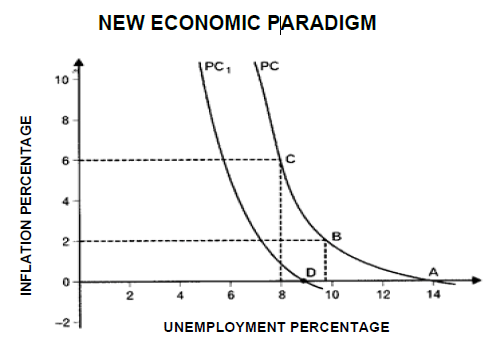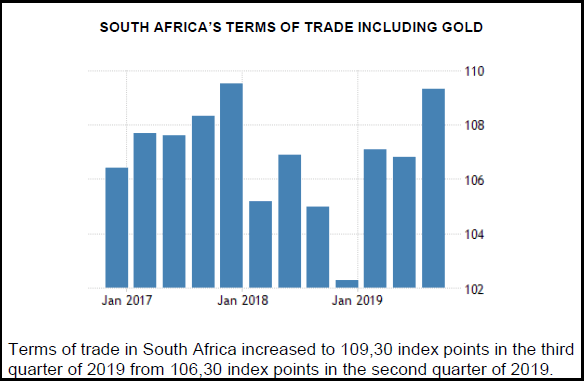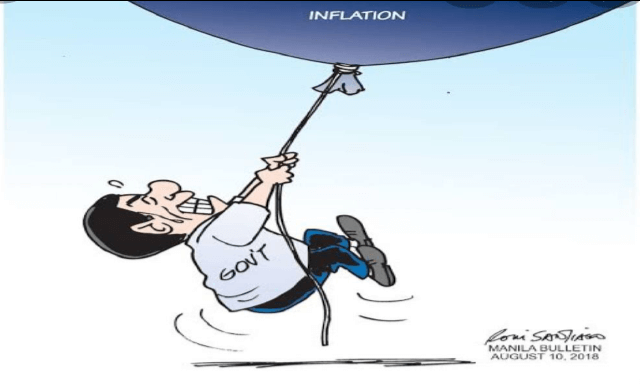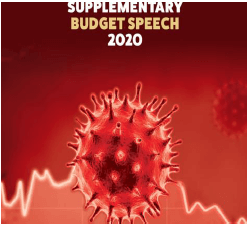Economics Paper 1 Grade 12 Questions - NSC Past Papers And Memos September 2020 Preparatory Examinations
Share via Whatsapp Join our WhatsApp Group Join our Telegram GroupINSTRUCTIONS AND INFORMATION
- Answer FOUR questions as follows in the ANSWER BOOK.
SECTION A: COMPULSORY
SECTION B: Answer TWO of the three questions.
SECTION C: Answer ONE of the two questions. - Answer only the required number of questions. Answers in excess of the required number will NOT be marked.
- Number the answers correctly according to the numbering system used in this question paper.
- Write the question number above each answer.
- Read the questions carefully.
- Start EACH question on a NEW page.
- Leave 2–3 lines between subsections of questions.
- Answer the questions in full sentences and ensure that the format, content and context of your responses comply with the cognitive requirements of the questions.
- Use only black or blue ink.
- You may use a non-programmable pocket calculator.
- Write neatly and legibly.
QUESTIONS
SECTION A (COMPULSORY) 30 MARKS – 20 MINUTES
QUESTION 1
1.1 Various options are provided as possible answers to the following questions. Choose the answer and write only the letter (A–D) next to the question numbers (1.1.1–1.1.8) in the ANSWER BOOK, for example 1.1.9 D.
1.1.1 The method used to derive total remuneration on factors of production is called the … method.
- production
- income
- circular
- expenditure
1.1.2 An indication of long-term growth in the economy is referred to as the …
- trend line.
- amplitude.
- length.
- trough.
1.1.3 South African Defence Force services are provided by ... government.
- district
- local
- provincial
- central
1.1.4 The current balance of payment has … account(s).
- two
- one
- three
- four
1.1.5 The number of employed persons as a percentage of the economically active population (EAP) is called the …
- economic growth.
- productivity rate.
- employment rate.
- labour productivity.
1.1.6 Economic integration where member countries agree on a common economic policy is called a/an ...
- economic union.
- free trade area.
- custom union.
- common market.
1.1.7 Which strategy failed in its objective to halve poverty and unemployment by 2014?
- New Growth Path (NGP)
- Accelerated and Shared Growth Initiative for South Africa (AsgiSA)
- Reconstruction and Development Plan (RDP)
- National Development Plan (NDP)
1.1.8 An indicator generally used to measure the cost of production is known as the … index.
- consumer price
- headcount
- price
- production price (8 x 2) (16)
1.2 Choose a description from COLUMN B that matches the item in COLUMN A. Write only the letter (A–I) next to the question numbers (1.2.1–1.2.8) in the ANSWER BOOK.
COLUMN A | COLUMN B | ||
1.2.1 | Portfolio investments | A | SARB consultation with commercial banks to act in a desirable manner according to prevailing economic conditions |
1.2.2 | System of National Accounts | B | the lower turning point of a business cycle |
1.2.3 | Moral suasion | C | a trade agreement between a group of emerging markets |
1.2.4 | BRICS | D | probable number of years a person will live after birth |
1.2.5 | Peak | E | government estimates of income and expenditure for a three-year period |
1.2.6 | MTEF | F | buying of financial assets such as shares in companies on the stock exchange of another country |
1.2.7 | Life expectancy | G | controlled by SARB |
1.2.8 | Money supply | H | the upper turning point of the business cycle |
I | prescribed by the United Nations to compile the gross domestic product figures | ||
(8 x 1) (8)
1.3 Give ONE term/word for each of the following descriptions. Write only the term/word next to the question numbers (1.3.1–1.3.6) in the ANSWER BOOK. NO ABBREVIATIONS will be accepted as answers.
1.3.1 A summary of the value of different leading indicators into a single value
1.3.2 Return of land to those who have lost it due to discriminatory laws of the past
1.3.3 When a product is sold on a foreign market at a price that is lower than the cost of production in the country of origin
1.3.4 The policy that aims to stabilise prices by combating inflation
1.3.5 An economy that excludes the foreign sector
1.3.6 The worldwide interaction of economies, with trade as a key element (6 x 1) (6)
TOTAL SECTION A: 30
SECTION B
Answer any TWO of the three questions in this section in the ANSWER BOOK.
QUESTION 2: MACROECONOMICS 40 MARKS – 30 MINUTES
2.1 Answer the following questions.
2.1.1 Name any TWO methods of import substitution. (2 x 1) (2)
2.1.2 How can world trade improve through specialisation? (1 x 2) (2)
2.2 Study the graph below and answer the questions that follow.
[Source: Enjoy Economics]
2.2.1 Provide a name for the graph given above. (1)
2.2.2 What is the original natural rate of unemployment in the graph above? (1)
2.2.3 Briefly describe the term new economic paradigm. (2)
2.2.4 Explain how the government can use its fiscal policy to speed up the recovery of an economy. (2)
2.2.5 With the aid of a graph, illustrate the effect of demand-side and supply-side policies in smoothing out business cycles. (4)
2.3 Study the graph below and answer the questions that follow.
[Source: tradingeconomics.com]
2.3.1 How much has the terms of trade increased in the last two quarters of 2019? (1)
2.3.2 What caused an increase in South Africa’s terms of trade in the third quarter of 2019? (1)
2.3.3 Briefly describe the term terms of trade. (2)
2.3.4 Explain the effect of an improvement in terms of trade on the economy. (2)
2.3.5 How does the current account deficit (negative balance of trade) affect terms of trade? (2 x 2) (4)
2.4 Discuss the reasons for export promotion. (4 x 2) (8)
2.5 Analyse the benefits of deregulation for households. (8)
[40]
QUESTION 3: ECONOMIC PURSUITS 40 MARKS – 30 MINUTES
3.1 Answer the following questions.
3.1.1 Name any TWO international organisations that require members to standardise their indicators. (2 x 1) (2)
3.1.2 How do countries in the North-divide contribute to the destruction of the environment? (1 x 2) (2)
3.2 Study the extract below and answer the questions that follow.
SOUTH AFRICA’S ECONOMIC OUTLOOK FOR 2020 SA's economic growth rate often found itself in negative territory during the year 2019. The renewed Eskom load-shedding in December 2019 led to forecasts on growth in 2020 likely to be less than the 1,4–1,6 percent range expected earlier by the SA Reserve Bank (SARB) and other economists.Economic growth in SA has virtually flat-lined. South African policy makers need to take a pro-active approach to build better economic prospects in 2020. [Source: Adapted from www.iol.co.za] |
3.2.1 Name an economic indicator used to measure economic growth. (1)
3.2.2 What is the term used to describe countries with low economic growth? (1)
3.2.3 Briefly describe the term economic growth. (2)
3.2.4 How does economic growth lead to economic development? (2)
3.2.5 What can South African policy makers do to improve the country’s economic standing? (4)
3.3 Study the information below and answer the questions that follow.
The consolidated budget spending is projected to exceed R2 trillion for the first time ever. Gross tax revenue collected during the first two months of 2020/21 is already R35,3 billion behind target. The country expects to miss the tax target for this year by over R300 billion.The consolidated budget spending is projected to exceed R2 trillion for the first time ever. Gross tax revenue collected during the first two months of 2020/21 is already R35,3 billion behind target. The country expects to miss the tax target for this year by over R300 billion. EXPECTATIONS FROM THE REVISED BUDGET: The Minister may adjust the progressive personal income tax tables, thus seeking to advance the redistributive effect given how the COVID-19 pandemic has worsened income and wealth inequality. National Treasury confirmed that Finance Minister Tito Mboweni, will announce new taxes in his February budget next year and this would include the wealth tax. The new taxes would help to stabilise debt and raise up to R40 billion in the next few years. |
[Source: adapted from the internet]
3.3.1 Identify the demand-side policy in promoting growth and development from the extract above. (1)
3.3.2 Give an example of wealth tax. (1)
3.3.3 Briefly describe the term progressive tax system. (2)
3.3.4 Explain the contribution of taxes to social development. (2)
3.3.5 How can the government through its budgetary processes redistribute income and wealth? (2 x 2) (4)
3.4 Briefly discuss capital formation and free advisory services as a supply side approach in promoting growth and development in South Africa. (4 x 2) (8)
3.5 Critically discuss how the Broad-based Black Economic Empowerment has benefitted the South African economy. (8)
[40]
QUESTION 4: MACROECONOMICS AND ECONOMIC PURSUITS
40 MARKS – 30 MINUTES
4.1 Answer the following questions.
4.1.1 Name TWO problems of public sector provisioning. (2 x 1) (2)
4.1.2 Why is it important to assess the performance of an economy? (1 x 2) (2)
4.2 Study the cartoon below and answer the questions that follow.
[Adapted from google images]
4.2.1 Name a monetary instrument used to achieve price stability. (1)
4.2.2 What is the inflation target range set by the South African Reserve Bank? (1)
4.2.3 Briefly describe the term repurchase rate (Repo rate). (2)
4.2.4 Explain the reason why government pursues price stability as a macroeconomic objective. (2)
4.2.5 How does the South African Reserve Bank maintain price stability? (4)
4.3 Study the extract below and answer the questions that follow.
LET’S GO BACK TO THE NDP: encouraging active citizens with their own development The sight of people in orange uniforms carrying brooms and garbage bags, sweeping and weeding roadside verges, often alone, has been a common one across the country since 2003 when the Department of Public Works launched its Expanded Public Works Programme (EPWP).The government adopted the NDP at the beginning of the past decade to eliminate poverty and reduce inequality.By 2030 the NDP envisages a reduction in the number of people who live in households with a monthly income below R419 per person from 39% to 0%. [Source: Adapted from National] |
4.3.1 What type of workers are often employed through the Expanded Public Works Programme? (1)
4.3.2 How is the NDP funded? (1)
4.3.3 Briefly describe the term economic development (2)
4.3.4 Explain how the development of human resources can be used as an approach to alleviate poverty. (2)
4.3.5 How can the NDP increase the employment rate in South Africa? (2 x 2) (4)
4.4 Briefly discuss poverty and trade as challenges of globalisation. (8)
4.5 Why should developing countries ensure survival of labour-intensive industries in a global economy? (8)
[40]
TOTAL SECTION B: 80
SECTION C
Answer any ONE of the two questions in this section in the ANSWER BOOK. Your answer will be assessed as follows:
STRUCTURE OF ESSAY | MARK ALLOCATION |
Introduction
| Max. 2 |
Body: Additional part: Give own opinion / Critically discuss / Evaluate / Critically evaluate / Draw a graph and explain / Use the graph given and explain / Complete the given graph / Calculate / Deduce / Compare / Explain / Distinguish / Interpret / Briefly debate | Max. 26 Max. 10 |
Conclusion
| Max. 2 |
TOTAL | 40 |
QUESTION 5: MACROECONOMICS 40 MARKS – 40 MINUTES
- Discuss in detail the markets within the four-sector model. (26)
- Evaluate the contribution/role of firms in growing the economy. (10)
QUESTION 6: ECONOMIC PURSUITS 40 MARKS – 40 MINUTES
- Discuss social indicators in detail. (26)
- How successful has the South African government been in promoting economic development through the use of these social indicators?(10)
TOTAL SECTION C: 40
GRAND TOTAL: 150
